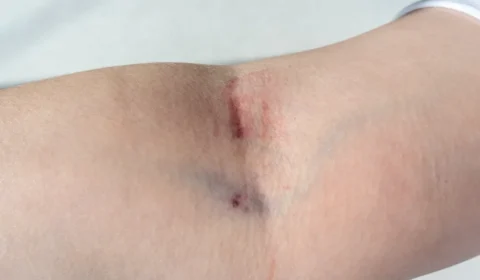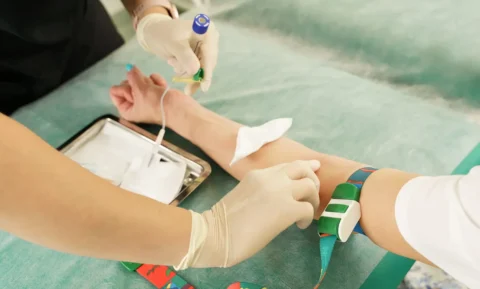While it’s beneficial for estheticians to have a medical background, you can undergo additional training from accredited centers. There are several courses that are beginner-friendly and accessible to everyone interested in aesthetic medicine. But you have to make sure that you check your state’s training quota requirements. You’ll need to enroll in a state-accredited course with continuing medical education (CME) credits.
So how does aesthetics training for non-medics work in most states? Students have the freedom to enroll in courses facilitated by training centers, schools, hospitals, and online providers. You’ll get access to lectures, reference texts, and live demonstrations. To get the most out of your aesthetics training, make sure you choose a credible institution offering it.
Requirements for Aesthetics Training
For the most part, there are very minimal requirements for aesthetics training. Interested individuals can enroll in a training course, provided they meet the necessary educational prerequisites. Unless you have a scholarship, these courses also come with a fee for all sessions.
Educational Background
It’s not necessary to have a medical or health-related degree to receive aesthetics training. However, you’ll need a high school diploma or a general education degree (GED) to work professionally at a medical spa. So while you’ll be able to take any courses that interest you, getting to use your learned concepts depends on finishing basic education.
You can ask your state’s cosmetology board about the specific educational requirements. Some may allow certified estheticians to work in medical spas if they’ve received proper training. However, your employers may ask you to undergo refresher sessions every few months to ensure that your knowledge is up-to-date.
Licenses and Certifications for Training Centers
Dedicated centers are the most common source of aesthetics training. Spread out all over the country, they have physical locations where classes are usually held. Training centers are ventures set up by medical professionals with aesthetic experience. For their course offerings to have CME credits, they’ll need to get accreditation from the state’s regulatory board
If your training center is part of an educational institution or hospital, they’ll need a special permit to operate. They’ll usually include a disclaimer or notice at the beginning of their course materials. You can also ask the staff upon enrollment about the institution’s documents.
Many state cosmetology boards also double-check the course contents before the training center can open it for enrollment. Some common topics overseen by cosmetology boards include:
- Business and ethical practices for clinics and spas
- Health and safety for staff
- Machine and equipment maintenance
- Patient screening and aftercare
- Skin science (including anatomy and laser physics)
- Ultrasound and radiofrequency modalities
The local cosmetology board may also send an accredited radiologist or physician to check the safety of the equipment and facilities. It’s common for these specialists to evaluate courses at varying levels, focusing on the different criteria stipulated in the state’s guidelines.
Once you finish the course, you’ll receive a certificate proving that you acquired and demonstrated the necessary skills. Additionally, manuals and other resources will still be accessible to you after the program. These may have come in physical and digital formats.
Hands-On Training for Prospective Aestheticians
The most important aspect of aesthetics training is the hands-on demonstrations. These serve as an opportunity to familiarize yourself with the modalities you’ll be using for most procedures. Most states also require a quota for hands-on training. For instance, Arizona requires 24 cumulative hours of laser demonstrations before you can obtain a certification.
Finding an Accredited Institution
Many states have accreditation bodies to check if the training center is eligible to offer courses. These include checking if all instructors are licensed doctors, nurses, or estheticians. It’ll be up to you to check if a single course allows you to meet the state’s training quota.
For example, Arizona requires prospective estheticians to take 40 hours of lectures on laser science, health and safety protocols, and patient care. They also ask students to undergo 24 cumulative hours of supervised laser therapy, and another 24 hours of laser demonstrations. If your course doesn’t cover all of these hours, you’ll have to take more courses until you fulfill the requirement.
Before you enroll in any training course, you should check if your training center’s instructors are licensed. Many centers display the certifications in their enrollment offices. You should also check if the course has CME credits, although the creditable hours will vary per course. This can help you if you plan to work across different states.
Further Training for Non-Medics
Some training institutions allow students to enroll in one-on-one sessions, although these cost more than normal classes. You can expect that these are only available a few times a year, due to the schedule of instructors.
Besides training courses about the procedures, you’ll also benefit from reading up on the FDA’s classifications for aesthetic medicine equipment. While these are covered in many programs, new equipment gets released all the time. The FDA’s official website is a good place to start, but there are seminars that cover how new technologies fall under the safety scale.
Besides the FDA’s safety scale, you’ll also find seminars talking about the latest developments in aesthetic medicine. Some common topics include newly developed treatments for wrinkle treatment and fine lines. These are usually medications that haven’t been made available yet but are being reviewed by professionals. Seminars like these are hosted by societies such as the American Med Spa Association (AmSpa).
Find the Best Medical Supplies and Training Courses at FACE Med Store
If you’re interested in undergoing aesthetics training, look for a training center or institution with a good track record. Additionally, you should also account for your own learning style and goals. Courses should cover procedures for common treatments, as well as the common legal and regulatory concerns in the field of aesthetics. By the time you finish your training, you should know how to safely administer basic cosmetic procedures.
At FACE Med Store, we offer high-quality courses facilitated by licensed professionals. We use high-quality resources to help our students learn about laser hair reduction, mesotherapy, skin science, and more. To see what courses we have to offer, you may browse our online store. You can also send us an email at info@facemedstore.com.






